From March 1948 to November 1949, the British frigate HMS Amethyst was accompanied by a friendly cat named Simon. The crew of the ship took an immediate liking to Simon and looked after him as one of their own. Simon was injured during the Amethyst Incident and was not expected to live. But he survived the ordeal and was awarded the animal equivalent of the Victoria Cross: the Dicken Medal.
Simon
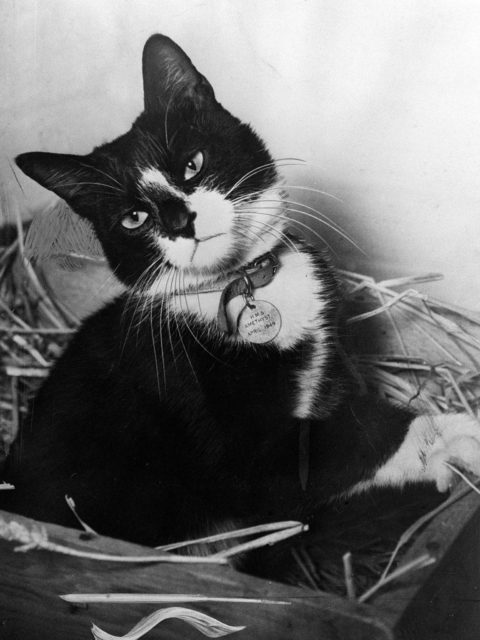
Simon’s journey with Amethyst started in March of 1948 when he was found wandering around a Hong Kong dockyard by ordinary seaman George Hickinbottom. The cat was about one year old, underweight and sickly, but Hickinbottom thought he was the perfect tool to eradicate the rats aboard HMS Amethyst.
The 17-year-old Hickinbottom smuggled the cat onto the ship and kept him in his cabin. He was given the name Simon and quickly became popular among Amethyst’s crew, even the captain took a liking to him.
Simon’s presence raised morale and he was appreciated for his work on the lower decks catching rats. He had a cheeky side too, often leaving dead rats and mice in the crew’s beds as “presents.” He would also curl up in the captain’s hat.
Simon was so popular that when the then-commander, Ian Griffiths, was replaced by Lieutenant Commander Bernard Skinner, the ship kept the cat.
The Amethyst Incident
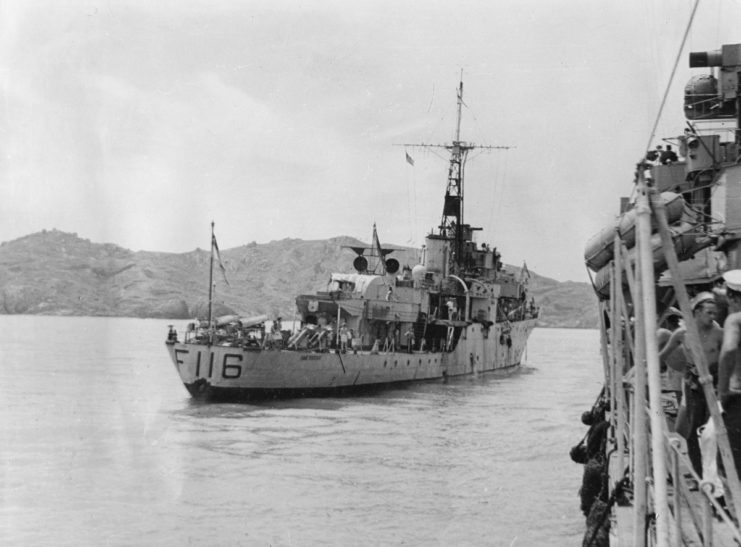
In April 1949 Amethyst made her way up the Yangtze River from Shanghai on what was Skinner’s first mission while in command of the ship. Her destination was Nanking, where she would relieve HMS Consort of her duties. At the time China was embroiled in a civil war between Mao Tse Tung’s People’s Liberation Army (PLA) and the ruling nationalist Party of Chiang Kai-shek. Britain had not taken a side in the conflict, so Amethyst’s journey up the Yangtze was expected to be safe.
By the morning of April 20, she was still over 50 miles from Nanking. Suddenly, Amethyst was rocked by shellfire from a Chinese PLA field gun battery on the northern bank of the river. The ship was peppered with shells and battered by explosions.
One of the first rounds hit the captain’s cabin, which fatally wounded Captain Skinner. But during the attack Simon the friendly cat became a casualty too, receiving severe wounds.
The casualties totaled 19 dead and 27 wounded. Amethyst took shelter further up the river and negations began for the release of the ship.
At the time of the attack, Simon was likely curled up in the captain’s cabin. A shell tore a foot-wide hole in the ship, sending four pieces of shrapnel into Simon’s body and burning his face and whiskers. He either fled or was thrown by the explosion, and was found a few days later.
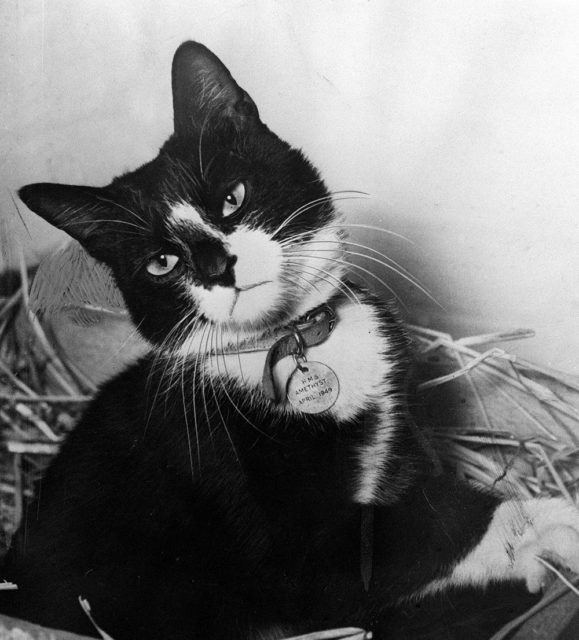
He was rushed to the sickbay and treated for his wounds like any other crew member would be. Medical officer Michael Fearnley proceeded to remove the shrapnel embedded in Simon’s legs and back and stitched him up. His burns were treated too. However, Fearnley doubted he would survive the night.
But survive Simon did, spending much of his recovery time in the sickbay with his fellow crew and helping improve morale.
Simon the hero
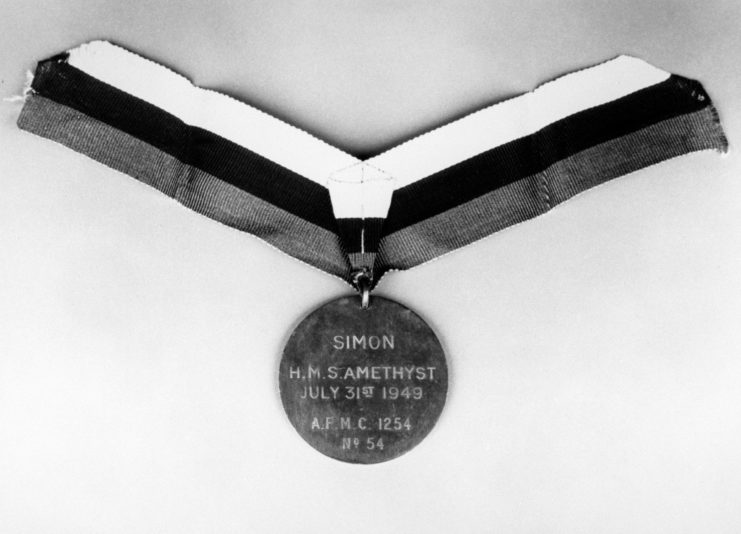
Amethyst remained on the Yangtze river for the next 100 days, with every attempt to move being met by Chinese shell fire. During this time the conditions on the ship deteriorated and food supplies ran dangerously low. Throughout this low period, Simon continued his morale and rat-catching duties, helping to keep down their ever-growing population.
On July 20, the ship’s new captain, Lieutenant Commander John Kerans, made a break for it under the cover of darkness. He managed to sail the ship 104 miles to open sea without any issues. Once he linked up with other Royal Navy ships, Kerans sent a message in typical British fashion: “Have rejoined the fleet south of Woo Sung. No damage or casualties. God save the King.”
After the incident, the crew was hailed as heroes, in particular, Simon. He immediately became an international celebrity and was captured in photographs and newsreels alongside his shipmates by the press. Letters from all over the world written to Simon came in. There were so many letters that a dedicated “cat officer” was tasked with sorting through it all.
The PDSA put Simon in for the Dicken Medal, the highest award for animals. It was to be presented to him in December 1949 after the crew had returned to England.
The crew reached England in November, and, like all animals returning from war, Simon was placed in a six-month quarantine.
Sadly, he would not survive.
Shortly after being placed in quarantine, he contracted a virus that his body, weakened by his war wounds, was unable to fight off. Despite desperate attempts by medical staff, Simon passed away on November 28, 1949.
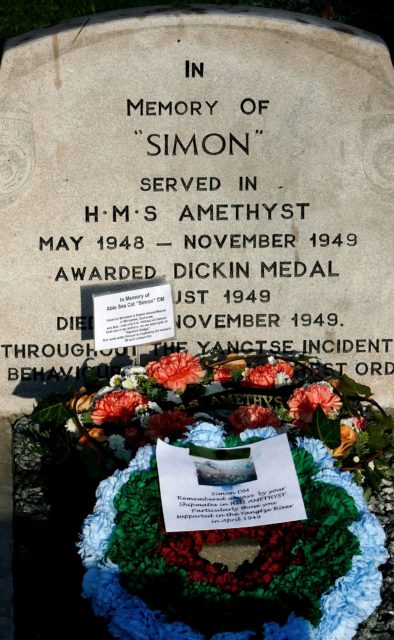
Today, Simon remains the only cat to have ever received the Dicken Medal.